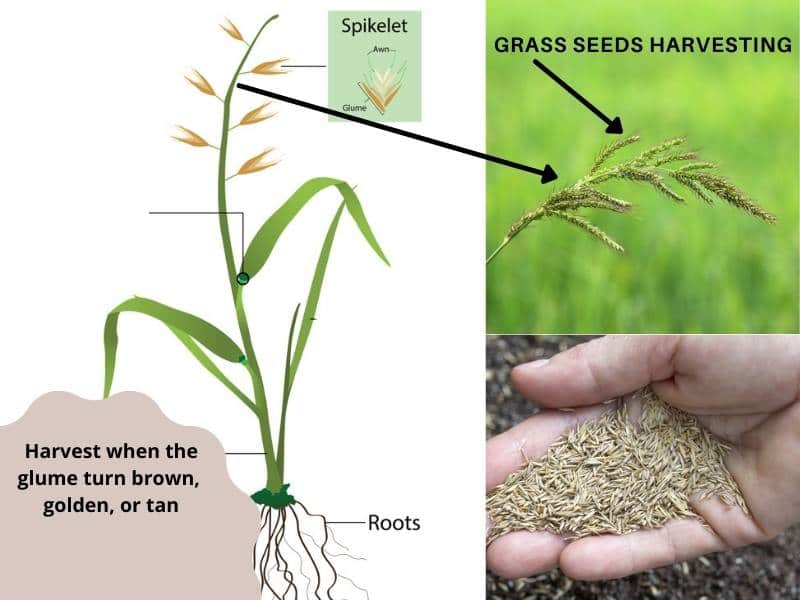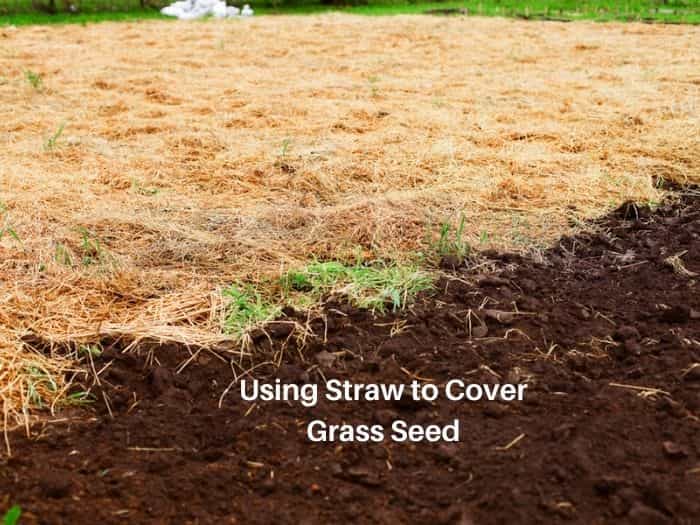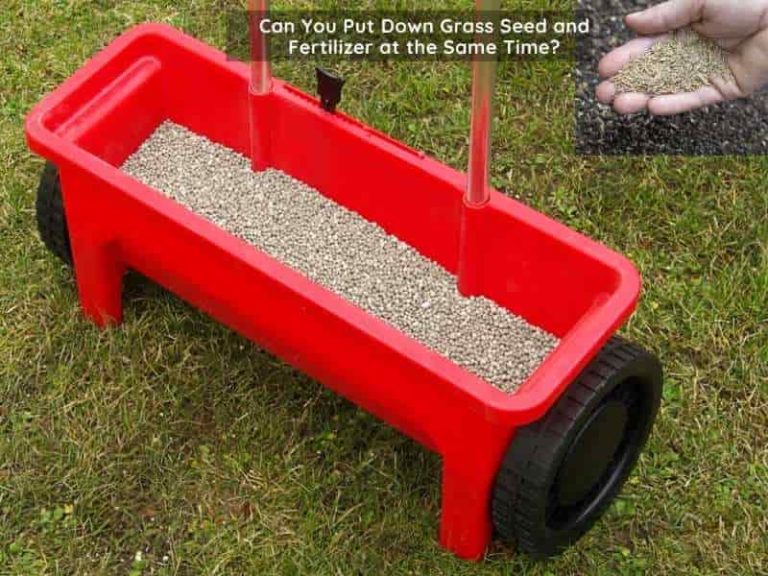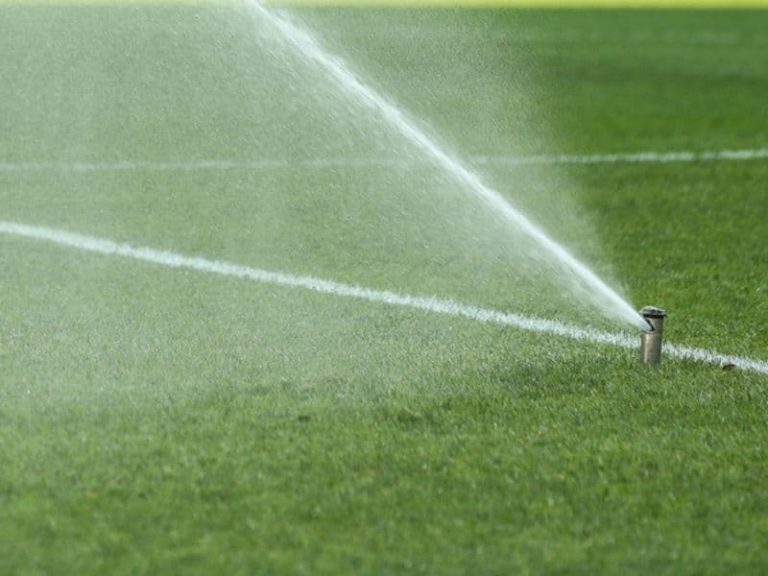How to Harvest Grass Seeds
Harvesting grass seeds from your lawn ensures you have the same turf growing, thus more uniformity, unlike buying mixed turfgrass seeds. If you harvest the seeds wrongly at the wrong time, you will end up with crappy seeds that will not germinate if you use them for reseeding or covering bare spots on the lawn. Carefully harvested and stored seeds will uniformly grow when planted to give the aesthetic you desire for your lawn.
Avoid mowing the lawn for 20-30 days to let the grass flower, produce seeds, and they mature. Seeds will be ready for harvesting when they turn brown, golden, or tan. Stalk or strip the seeds and store them in a dry container. Fertilize the lawn to get thinner after producing seeds.
Can I harvest my own grass seeds?
You can easily grow and harvest your grass seeds from the lawn without hiring expensive harvesters or buying new seeds each growing season. Use your hands to harvest the grass seed if you have a small lawn area. You only need time and effort to employ in the harvesting task.
When is grass seed ready for harvesting?
Grass seeds become ready for harvesting between 20 and 30 days after producing flowers. Seeds take different times to mature, depending on the flowering period. Grass seeds mature earlier in hot and dry weather conditions, while they take longer in cold and moist weather conditions.
Grass seeds fall off from the plant 10-15 days after maturity. Cool-season grasses bloom and produce seeds in late spring and early summer (between mid-July and August). Meanwhile, warm-season grasses bloom in late summer (late August to late October).
Kentucky bluegrass matures to produce seeds in late July or early August, and this is the best period to harvest their seeds. When mature, the seedhead shutters to remove small and light seeds, though it doesn’t shatter easily.
Creeping red fescue and tall fescue seeds mature in early August. The seeds don’t shutter easily from the seedhead. Delaying harvesting for a few days can make the seeds shatter easily. Tall fescue seeds are brown with a slight green tinge on the base when mature.
Perennial ryegrass shutters easily when mature and produce one or two florets from the head if pulled between fingers.
Note: Because weather conditions vary, thus affecting the ripening of grass seeds, it’s vital to check the seeds first to confirm if they are ready before harvesting. Grass seeds mature from top to bottom, turning brown, golden, or tan. If you strike the seedheads roughly against your palms, if mature, the seeds will shutter and fall to your hand.
How to harvest grass seeds
Correct grass preparation, well-checked mature seeds, right harvesting, and proper storage methods produce the most viable seeds when grown on the lawn.

Here’s how to carry out these processes:
1. Prepare the grass seeds
You want to get enough viable grass seeds for overseeding or covering the bare spots in your lawn in the next growing season. You need to prepare the grass seeds before harvesting them. Mowing cuts grass stalks holding grass seeds. Don’t mow the lawn for 20-30 days to let the grass flower, produce seeds, and the seeds mature. This should be in mid or late summer. The seeds should dry out after maturity for easy harvest.
Keep watering the lawn while waiting for the seeds to mature.
2. Check the grass seeds to confirm if they are ready
After the waiting period, check the seeds to confirm if they are ready for harvesting. Variations in weather conditions affect when seeds mature, which varies on all types of turfgrasses producing seeds. Checking the seeds ensures you harvest them at the correct time, not too early when they are still green and moist, or too late that the seedhead has shuttered and poured the seeds to the ground.
Ready to harvest seeds turn brown, golden, or tan. Some like perennial ryegrass turn brown but light green at the base. Check the color of the seedhead first before you harvest them.
Other than color, grass seedheads shutter and remove seeds if squeezed in the palm. Pull a grass stalk and squeeze its seedhead in your palm using your thumb and index finger. The grass seeds are ready for harvesting if the seedhead shutters and releases dry seeds falling into your palm. However, if the seeds are green and moist, give them more time to mature fully before harvesting.
3. Harvest the mature grass seeds
Suppose you found your grass seeds tan, brown, or golden and dry enough; it’s time to harvest them. There are two methods to harvest grass seeds, and each method will depend on how much time and effort you have to harvest the grass seeds.
The first method is stalking, which involves removing the grass seeds together with the seedheads, leaves, and stalk, then drying them out under a shade or placing them in a bag as they continue to dry, shutter, and remove seeds. Stalking takes more time and effort.
The second method is stripping, which involves removing the seeds directly from the seedhead while the seedhead is attached to the stalk. Stripping doesn’t need you to cut the stalks thus taking less time and effort.

Harvesting grass seeds by stalking
You will need a pair of scissors and a bag. Cut the seedhead stem about 2 or 3 inches below the base of the seeds using a pair of scissors. Place the cut stem into the bag.
Harvesting seeds by stripping
You will need a bag for placing the seeds. Grasp the grass stalk and hold it tightly with one hand. Slide your thumb and index finger upwards to the top of the plant while squeezing with the other hand. The seedhead will shutter to deposit seeds on top of your fingers. Collect the seeds carefully and dip them in the bag.
4. Storing grass seeds
Store the seeds collected by stripping them in a dry container. Moisture in the container encourages molds to grow, reducing the seeds’ viability. Store the container in a cool place with some sun. Avoid dark areas as they also encourage the growth of molds. Store the container safely away from pests such as rodents who may bite the container and eat the seeds.
If you harvested the seeds by stalking, shake the bag to deposit the seeds to the bottom. Some seedheads will not have opened to release seeds; give them more time. Shake the bag often. After eight weeks, almost all the seedheads will have been opened and released seeds. Shake the bag for the last time to release the remaining seeds. Open the bag, collect, and transfer the seeds to a new dry container.
Store the container in a cool, dry place away from rodents. By now, the seeds are ready for overseeding or covering bare spots for the next growing season.
After harvesting grass seeds, be sure to fertilize the lawn because turf becomes thinner when they concentrate on forming seedheads and producing seeds.
Types of grass that produce seeds
Not all turfgrasses produce viable seeds harvested for overseeding or covering bare spots in lawns. Most warm-season grass varieties are sod-forming and only a few produce viable seeds. Perennial ryegrass, tall fescue, and Kentucky bluegrass are the most common cold season grasses that produce seeds.
Kentucky bluegrass grows faster in spring and fall, and it establishes itself in lawns through seeds. It germinates more slowly than other cold season grasses. Kentucky bluegrass produces panicle inflorescence, pyramidal in shape with 30- 100 spikelets that produce seeds when mature.
Centipedegrass naturally reseeds itself. It has a 3-5 inches long raceme inflorescence, with spikelets in two rows. When the spikelets mature, they produce viable seeds dispersed by wind to the other parts of the lawn, thus reseeding itself.
Common bermudagrass produces outcrossed seeds and has inflorescence consisting of 3 to 7 spikelets in a single whorl.
Buffalograss has a pistillate flower with ten 4mm tall spikelets that mature to release seeds.
Other common turfgrasses that produce seeds are zoysiagrass and bahiagrass.
Sources and References
- University of Minnesota: Finding the right grass seed.
- Michigan State University: When grass produces seedheads.




